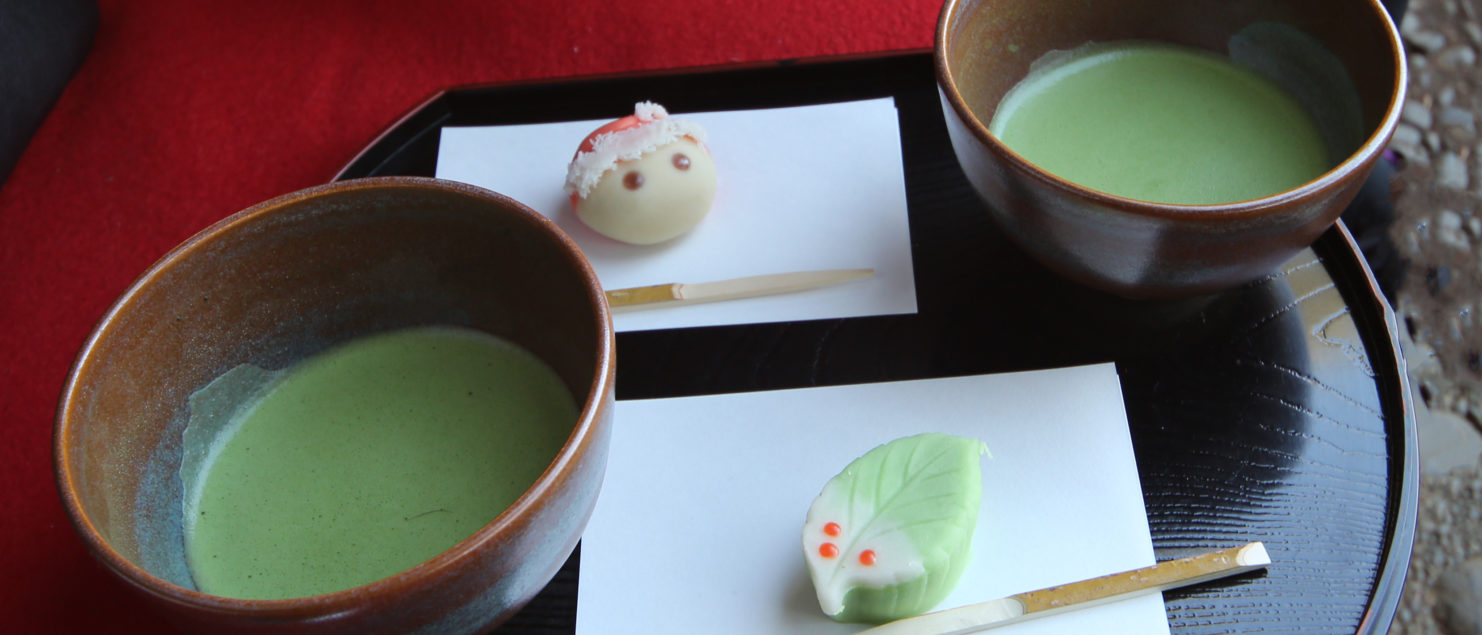Wagashis, traditional Japanese Confectioneries
One of the famous Japanese traditions it’s to fall sleep anywhere at any time. This practice it’s called inemuri いねむりwhich can be translated as being present while sleeping. I was in fact quite shocked the first days I spent in japan and I saw people sleeping almost anywhere; in the middle of the city, on the train (even while standing), on benches, on the grass of a park, on a fast-food restaurant table… I even saw once a guy dressed in suit sleeping against a road fence in Shibuya!
As a Spaniard I could not stop thinking, how safe Tokyo was, as just thinking that doing the same sort of thing in my country would have brought terrible consequences, in the best case scenario being robbed. But why do Japanese inemuri? Well it’s difficult to give a direct answer but IMO it might be related to the fact that as they work so hard (a lot of times during the night) and also due to nowadays social pressure of ‘not missing anything’ sometimes they just disconnect for a while to get some energy.
In my case I just inemuried the whole day after landing in Japan due to the jet lag but fortunately I did it at home.
 Saitama Prefecture
Saitama Prefecture
On Sunday after resting the whole Saturday, me and my GF decided to visit some of her relatives so we headed off Saitama, a prefecture located on the Yamanote line at the North East of Tokyo. The area was historically known as a fertile agricultural region which produced much of the food for the Kantō region and during the Edo period, many daimyōs (feudal lords) ruled small domains within the prefecture and nowadays it’s a quiet and beautiful residential suburb of Tokyo.
Kasukabe a city located on the Saitama prefecture it’s also well known to be the hometown of Shinnosuke Nohara AKA Shin-Chan the small kid of the Crayon Shin-chan animation series created by Yoshito Usui. Its really big in Tokyo and sven some of the metros on the city are decorated with drawings of the TV series.
After having a healthy delicious Japanese lunch, it was time to head off a Japanese traditional confectionery cooking class. The Japanese confectioneries are called Wagashi and they are so diverse, the following are some of the most common ones:
 Namagashi 生菓子
Namagashi 生菓子
Delicate, subtle, soft, fluffy… These are known as the most common traditional confectioneries that are usually served along with matcha green tea during the tea ceremony. The most common way to create them its to shape a ball of anko 餡/小豆餡 which its a paste of sweetazuki red red beans AKA anko-an アズキ, 小豆 and cover it with a layer of mochi 餅, もち which its a paste made out of a short-grain japonica glutinous rice. The namagashis are beautifully shaped, decorated and coloured in different ways depending on the season or occasion. They taste so subtle, slightly sweet and they perfectly match the bitter taste of the matcha green tea.
 Anpan あんパン
Anpan あんパン
Looks like a bread filled in with chocolate, but it’s in fact filled in with the aforementioned anko-an アズキ, 小豆 red bean paste. If you have ever read mangas you might have seen them. They are one of the Japanese kid’s favourite sweets.
 Daifuku 大福
Daifuku 大福
AKA daifukumochi 大福餅 which literally means great luck. It’s another confection consisting on a small round mochi usually stuffed with anko or any other sweet ingredient (strawberries, crushed melon paste, coconut…). They are similar to the wagashis but less detailed on the outside and they are covered with a light layer of potato starch to keep them from sticking to each other. Popular daifuku variations include strawberry (ichigo), beans (mame) and ice cream. Daifuku should be eaten quickly because they lose the water fast and they become hard if left at room temperature.
 Dango 団子
Dango 団子
A Japanese dumpling and sweet made from mochiko (similar to mochi). They are usually served with green tea. Dangos are eaten year-round, but the different varieties are traditionally eaten in given seasons. Three to four dango are often served on a skewer. The most common one its known as mitarashi dango みたらし団子 which is covered with a syrup glaze made from soy sauce and sugar.
The class was taught in a restaurant close to Higashi-Mukōjima a famous Tobu line station in Sumida neighbourhood by the Sensei and creator of the Ittetsu Japanese Confectionery School. Even though the wagashi cooking class was taught in Japanese the atmosphere was great and I could learn a lot. In this case we created 3 types of Wagashi 和菓子
The Ittetsu Japanese Confectionery School has also a Japanese confectionery shop in Sumida next to the Higashi-Mukōjima station that sells delicious treats. I strongly recommend you to visit their Traditional Japanese confectionery shop it if you are in tokyo and have the chance to pop by.
